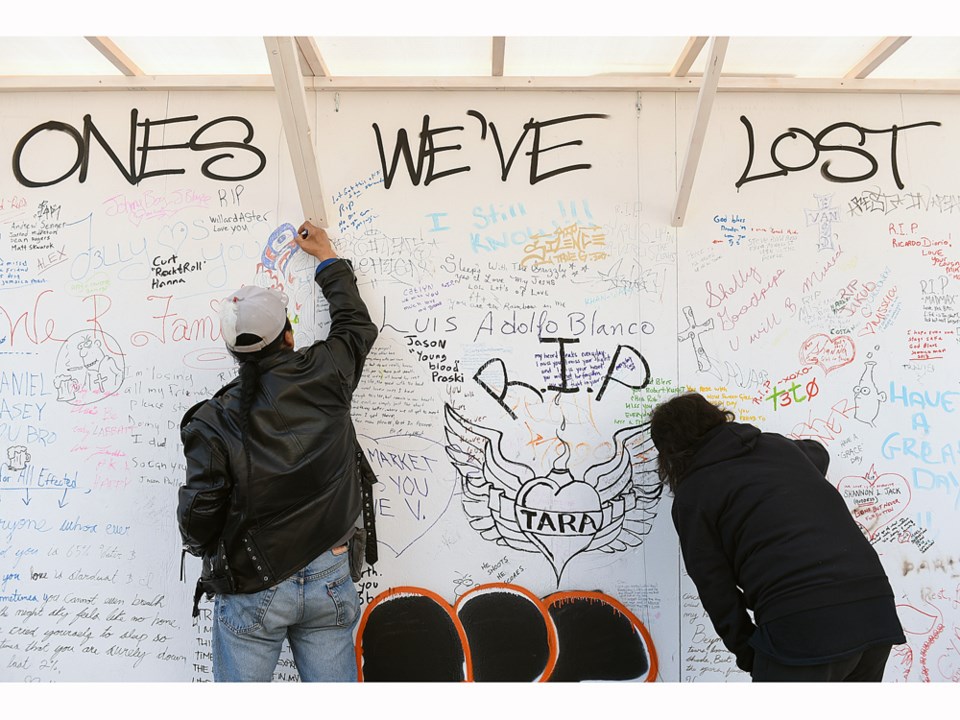While the number of opioid deaths appears to be levelling off, massive and systemic changes across multiple levels of government and service providers are needed just to catch up with the tide of death washing across B.C. and Canada.
That was the consensus of health practitioners across a number of disciplines Feb. 7, as preliminary totals were unveiled for illicit drug overdose deaths in 2018.
The numbers aren’t final, but 1,489 people in B.C. died last year from illicit drug overdoses — more than homicides, car accidents and suicides combined.
That statistic will rise as more toxicology tests are finalized.
The death toll in 2017 was 1,486.
Fentanyl was found in 85 per cent of toxicology tests last year, compared to 82 per cent in 2017. In 2012, that figure sat at just four per cent. By 2014, fentanyl was found in 25 per cent of illicit drug deaths.
Other substances found in 2018 toxicology tests included cocaine (49 per cent), methamphetamines (31 per cent) and alcohol (26 per cent).
New metrics available to the Coroners Service shed light on those who died:
- 77 per cent were described by family or healthcare providers as regular or chronic users of illicit drugs
- 80 per cent of those died had made contact with the health care system within the same year they died
- 44 per cent were employed, predominantly in the trades, transport or service sectors
- 45 per cent of those who died were dealing with pain-related issues, although the report does not specify whether that pain was physical, emotional or psychological.
“That’s why we’re seeing these people continuing to die — because they’re struggling,” chief coroner Lisa Lapointe said. “They’re looking for help. And, right now, the illicit substances look attractive.”
As was the case in previous years, the majority of those who died were men between the ages of 30 and 59. Most of them died in private residences and used alone.
Vancouver, Surrey and Victoria saw the highest number of overdose deaths and the Vancouver Coastal Health Authority had the highest rate of illicit drug overdose deaths: 37 deaths per 100,000 individuals. Last year was the first time in 30 years where life expectancy in B.C. was expected to drop.
“That’s largely because of this preventable overdose crisis,” said provincial health officer Dr. Bonnie Henry.
More than 140,000 naloxone kits are in circulation in B.C., and they’ve been used 36,000 times.
BC Centre on Substance Use executive director Dr. Evan Wood suggested “massive gaps” exist in both provincial and federal health policies surrounding opioids: doctors aren’t adequately trained, not enough prescription-grade alternatives are available and treatment practices have failed to keep up. Wood cited a U.S. study that suggested doctors in 100 schools down south received one hour of addiction training in four years’ worth of schooling.
“It’s probably less than that in British Columbia and the rest of Canada,” he said. Physicians who prescribe opioids to those who’ve never used them need to stop, while a safer supply needs to be introduced to those who already use, Wood said.
“We have inadequately trained healthcare providers who are creating more cases of addiction,” Wood said.
Henry said she’s had conversations with the federal government around the complete decriminalization of drugs, although she didn’t offer specifics.
In the meantime, she’s lobbying for prescription-grade heroin or other forms of medication such as hydromorphone to be made more readily available.
“We can’t wait for the federal government to take those actions in the province. We need to be able to take actions that allow us to save the lives of those people right now who are dealing with addictions,” Henry said.
@JohnKurucz



